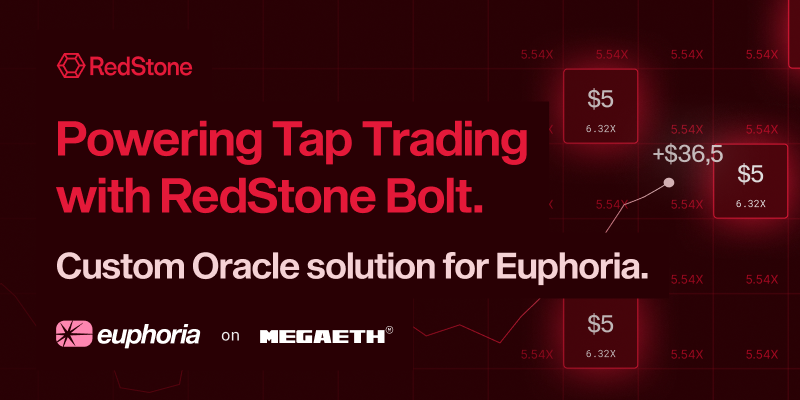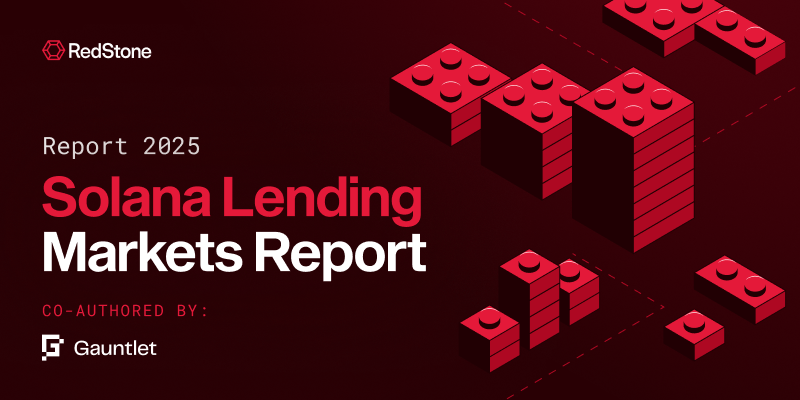Takeaways from our presentation about push and pull oracle models, and our price feeds at Consensus 2024 in Austin Texas.
A Glance at Blockchain oracles in 2024
The current product fit for oracles is providing market data to decentralized applications. This includes data like prices of assets, trading volumes, and interest rates. However, more than 95% of data delivered by oracles is price data, most of which is cryptocurrency prices. Today, the ETH/USD price feed is the most commonly requested due to Ethereum’s ecosystem relevance in the blockchain industry. Ethereum’s ecosystem includes Layer 2 networks and ETH-correlated assets like Liquid Staking and Liquid Restaking tokens (LRTs). Examples of these include Lido’s wstETH and EtherFi’s weETH. ETH-correlated assets make up a significant portion of Ethereum’s ecosystem.
Who Uses Blockchain oracles?
Decentralized finance (DeFi) applications heavily rely on accurate oracle data feeds. Examples of DeFi apps supported by RedStone include Pendle, Morpho, Fraxlend, and Venus. Other categories of blockchain applications that use oracles are CDP protocols like Liquity, leverage protocols like DeltaPrime, derivative protocols like GMX, yield protocols like Enzyme, and algorithmic stablecoins like Mento. Blockchain oracles are fundamental for the majority of blockchain applications.
Where do the Prices of Cryptocurrencies Come From?
Price discovery occurs on centralized exchanges (CEXes) like Binance or Coinbase and decentralized exchanges (DEXes) like Uniswap and Balancer. On these platforms, participants decide what price they are willing to pay for an asset and execute trades. RedStone takes prices from data providers who package price information, performs calculations on the prices, such as taking the median or weighted average price of an asset based on several exchange prices, and then passes signed data packages to the Data Distribution Layer (DDL). RedStone’s DDL is completely transparent and allows people to fetch price information from it for their dApps.
Where are New Blockchain Oracle Services Necessary?
The DeFi market benefits from having several oracle services for builders to choose from. Some key considerations include…
- Relying on a single oracle for the entire market poses a single point of failure and risk of centralization.
- Services like Chainlink have helped bootstrap the DeFi ecosystem in 2020, but in a quickly innovating industry, this infrastructure became a legacy.
- The market constantly requires data feeds unsupported by Chainlink with on-demand updates.
- The Chainlink’s push model is not available for many prospective chains like Blast, Mode, BOB, Mantle, TON, and a number of others.
- The Chainlink’s pull model is not cross-chain compatible by design and is available only on Arbitrum. The pull model is also deemed expensive by dApp developers.
Why Is the Push Model (i.e., Price Feeds That Are Regularly Updated) Expensive to Maintain and Expand at Scale?
Gas fees have various median values for different networks and change based on the usage of a network. This means that the amount of gas fees paid by a dApp changes significantly based on industry conditions. One example of this could be a major change to a significant protocol in the industry like raising the amount of staked assets that can be deposited on EigenLayer. In some instances, a regularly updated interval of data could result in $100,000s spent during relatively short periods of extreme network congestion. This is because oracles in the Push model have to update price feeds on-chain each time an update condition is triggered, regardless of how much the update may cost (sometimes as high as $100+ for a single update). RedStone’s Pull Model paves the solution to this problem. The pull model is more cost-efficient as data is stored off-chain and put on-chain only when necessary. The pull model provides flexibility for who pays for its services, as the fee for bringing data onto the blockchain is visible in a slightly increased gas fee paid by the user. This means that protocols can fully pay oracle fees or subsidize the fees for users.
| Push | Pull / On-Demand | |
|---|---|---|
| Update Condition | Time Interval and/or Deviation (minutes) | User’s interaction (seconds) |
| Gas Coverage | Oracle / Protocol | User / Protocol |
| Cross-chain | Non-Scalable | More Scalable |
| Number of Feeds | Limited | Versatile |
How Does oracle Data Go From an Exchange Like Binance to an Application That I Use?
In the RedStone’s flow, data providers can either use their own price discovery method like Kaiko does or utilize a library for fetching data from data sources including exchanges and price aggregators. That design allows for flexibility for data providers. Data Providers pass signed data packages to a middle layer, RedStone’s Data Distribution Layer (DDL), a transparent network that allows anyone to pick up the signed price feeds. Data can be delivered to end users in multiple models i.e. Core, Classic, X. One way to deliver data onto the blockchain is through a bridge like Wormhole, which is leveraged by Pyth, another oracle provider. At RedStone we have built a custom cost-effective approach by attaching signed data packages to the call data of user transactions, meaning we put data into a user’s transaction, keeping the security of the destination chain.
Why Is RedStone Able to Attach Data to a User’s Transaction Call Data Instead of Using a Bridge Like Wormhole?
Ethereum is a state machine, meaning it moves from state to state. Typically, call data contains arguments or data for the execution of smart contracts. This allows RedStone to insert its data feeds in the call data. See the image below for a visual representation.
What Are Some Key Considerations When Selecting an Oracle Service?
Historical mispricing
- Is there a significant difference in the amount of inaccurate pricing compared to other oracles?
Customizability
- Does an oracle provider offer customized solutions for projects?
Points of weakness
- What is required for an oracle to fail, what are the potential points of failure?
Price aggregation methodology
- What aggregation methods are used for prices, are they sufficiently diverse?
Security
- Is there a guarantee of partial reimbursement if funds are lost due to hacks
Pricing
- Does an oracle service provide competitive pricing for its clients?
Integration difficulty
- How long does it take for a Dapp to get price feeds?
Governance and tokenomics
- What is the oracle token used for and who receives the token?
Existing clientele
- What projects is an oracle providing data feeds for and for how long? How much value is being secured (TVS) by an oracle provider?
Click here, to watch the full presentation.
About RedStone
RedStone is the fastest-growing modular oracle delivering diverse, high-frequency data feeds to EVM Layer1, Layer2, Rollup-as-a-Service networks, and beyond, i.e., Starknet, Fuel Network, Casper, or TON. By responding to market trends and developer needs, RedStone can support assets not available elsewhere. The modular design allows for data consumption models adjusted to specific use cases, i.e., capital-efficient LSTfi and early support of LRTs. RedStone raised almost $22M from Lemniscap, Blockchain Capital, Maven11, Arrington Capital, Coinbase Ventures, SevenX, IOSG, Stani Kulechov, Sandeep Nailwal, Alex Gluchovski, Emin Gun Sirer, and other top VCs & Angels.
Frequently Asked Questions
What are the key differences between push and pull oracles?
Push oracles continuously update data on-chain at regular intervals, while pull oracles only update data when requested. Push models are more expensive but provide real-time data, while pull models are more cost-effective and offer on-demand updates.
How does RedStone’s pull oracle model save on gas fees?
RedStone’s pull oracle model stores data off-chain and updates the blockchain only when necessary. This reduces the frequency of on-chain transactions, leading to significant savings in gas fees.
What types of applications are best suited for pull oracles?
Pull oracles are ideal for DeFi applications such as lending platforms, where real-time price updates are not as critical, and cost-efficiency is a priority.
How does RedStone integrate with various blockchains?
RedStone supports over 50 blockchains, including Ethereum, zkSync, Polygon, and Avalanche. Its modular oracles are designed to be flexible, easily integrating into various platforms with minimal friction.



